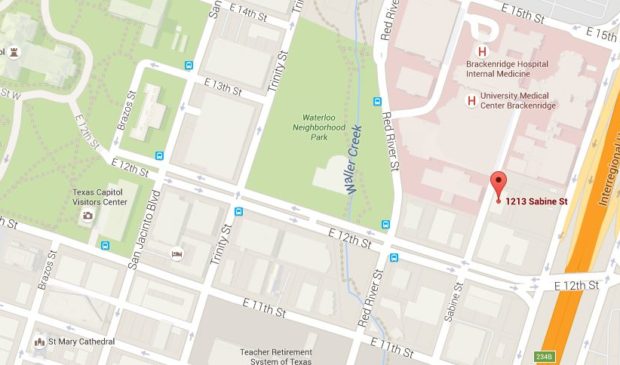County, city shake hands on sobriety center agreement
Thursday, June 30, 2016 by
Caleb Pritchard Both Travis County and the city of Austin have ratified an agreement that will form the basis of a new venture aimed at both battling substance abuse and unclogging the county’s central booking facility.
On Tuesday, the Commissioners Court voted 3-0-1 to approve the interlocal agreement with the city to create and fund a new governmental entity that will operate a downtown sobriety center. Commissioner Ron Davis abstained, while Commissioner Margaret Gomez was off the dais. Last Thursday, City Council approved the agreement through a unanimous vote on the consent agenda.
“I’m really happy that elected officials and also community folks have come together to try a project that hopefully will allow police to spend more time patrolling the streets, reduce costs in emergency rooms and make Austin a safer place,” attorney Andy Brown told the Austin Monitor on Wednesday. Brown was the head of the Sobriety Center Planning Committee, which was deputized in 2014 to create the framework for the center.
According to a report the committee published last year, there were 3,032 bookings in 2014 at Travis County’s downtown jail that could have otherwise been diverted to the sobriety center. The committee estimated that those arrests cost both the Austin Police Department and the Travis County Sheriff’s Office as much as $1,062,151.
But Brown explained that there are other opportunity costs that the center will defray. Each trip to the jail takes at least one officer off the streets for hours at a time. Furthermore, if an officer determines a person is drunk enough to require medical attention, the only solution is a supervised sobering-up at the nearest emergency room.
“A drunk person just sits in there and parks it for four to six hours,” Brown said. “So not only are they taking up a bed, they’re taking up multiple opportunities to use that bed for people who actually need emergency care.”
To operate the center, the city and the county have agreed to set up a local government corporation. The court and Council will each appoint four members to the corporation’s nine-person board of directors. The ninth appointee will require joint approval from both Council and the court.
The estimated 10-year cost of the center is $23,272,528. The city is expected to cover $18,265,013 of that, while the county’s cost is $5,007,515. The county’s share includes a $4,060,658 credit for the use of its Medical Examiner’s Office building at 1213 Sabine St. That space will be available when the ME’s Office moves into a new building that is currently under construction in northeast Austin.
The Sabine Street location had been a point of minor controversy due to its proximity to University Medical Center Brackenridge. That giant tract, owned by Central Health, has been targeted for a massive mixed-use redevelopment.
On Tuesday, Davis said he thought the sobriety center agreement undervalued the county’s property.
“That is a prime piece of real estate,” Davis said. “And the reason why I say that is because that particular acreage has no Capitol View height limitations, which means that you can build up as high as you’d like to.”
To mollify concerns about the center’s location, the agreement contains a provision that requires the governing corporation to reassess the site in five years and also examine options to relocate the center to another part of the city.
Davis also questioned whether the cost of the project would be worth it, to which County Judge Sarah Eckhardt drafted Commissioner Gerald Daugherty to respond. Along with Gomez, Daugherty served on the intergovernmental work group that inherited the planning committee’s implementation plan. The court’s lone Republican explained to Davis that at first he was dubious.
“I was drug across the line, really, from a fiscal standpoint, thinking that if we can divert some of the folks from going into central booking and we can also perhaps really limit what we take to Brackenridge Hospital, then to me it will pay for itself,” Daugherty said.
He added that some members of the public will misinterpret the aim of the center. “I do cringe because the media likes to use words that light the community up, and ‘drunk tank’ is something that, when you say that, you can watch the calls come into the talk shows,” said Daugherty.
The sobriety center’s planners have long contended that the facility will not simply be a “drunk tank.” On Wednesday, Brown reiterated to the Monitor that the center adds one more option to the public intoxication palette.
“It’s not a free place to go after drinking because officers are still going to have the discretion to issue a citation,” Brown said. He also explained that anyone suspected of other crimes, such as drunk driving, will still end up in jail. Furthermore, he said, while exact details are still being worked out, the center’s aim is to provide service beyond that of a place to simply sleep one off.
Said Brown, “The model that we looked at in Houston tracks people who go through to find repeat visitors to make sure they’re pointed in the direction of recovery if that’s possible.”
You're a community leader
And we’re honored you look to us for serious, in-depth news. You know a strong community needs local and dedicated watchdog reporting. We’re here for you and that won’t change. Now will you take the powerful next step and support our nonprofit news organization?






